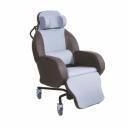Are there monitors that display crystal clear the UFO test?
Go to solution
Solved by manikyath,
depends where you put your treshold, "perfection" is impossible.
also - any display capable of, for example, perfectly accurately switching pixels at 60Hz, is most likely also capable of running at MUCH higher framerates while staying within acceptable limits.
the thing about a "perfect" UFO test result, is that it is largely irrelevant to reach perfection if a less perfect higher framerate looks smoother without noticeable ghosting in real world scenarios.

















Create an account or sign in to comment
You need to be a member in order to leave a comment
Create an account
Sign up for a new account in our community. It's easy!
Register a new accountSign in
Already have an account? Sign in here.
Sign In Now